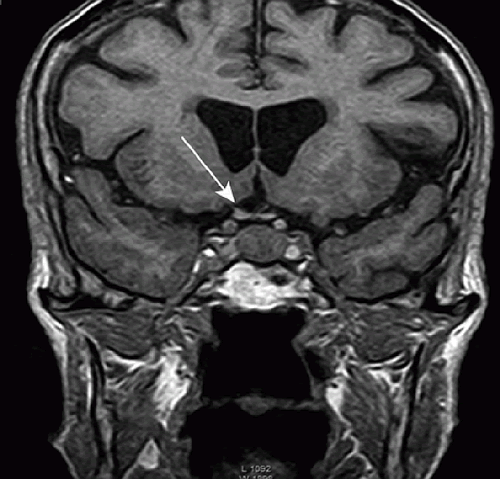ICEECE2012 Poster Presentations Pituitary Clinical (183 abstracts)
Thyrotropinoma. A rare case report of hyperthyroidism
H. Tamez-Pèrez 1 , D. Quintanilla-Flores 1 , M. Hernàndez-Coria 2 , J. Cisneros-Franco 1 , A. Tamez-Peña 1 & S. Proskauer-Peña 1
1Facultad de Medicina y Hospital Universitario “Dr Josè Eleuterio Gonzàlez”, Universidad Autònoma de Nuevo Leòn, Monterrey, Mexico; 2Universidad Juàrez del Estado de Durango, Durango, Mexico.
Case presentation: A 84 year-old male without family history of thyroid disease was referred to our clinic by his cardiologist, diagnosed as having primary hypothyroidism, characterized by persistent elevated TSH without response to L-thyroxine over the course of a year. Co-morbidities included arterial hypertension, auricular fibrillation (AF) and glucose intolerance, treated with propafenone, clopidogrel, enalapril, and digoxine. On physical examination, he presented AF with tachycardia, mild distal tremor, and no goiter.
Thyroid function tests (TFT) reported TSH: 6.87 mU/ml (normal 0.4–4.5), T4: 2.31 ng/dl (normal 0.8–2.0). Thyroid auto-antibodies were negative. It was decided to lower L-thyroxine dose. Six months later, the patient remained symptomatic despite treatment discontinuation. TFT were repeated, showing high TSH and T4 levels. More specific tests and a MRI were ordered (Fig. 1).

TSH response to the TRH test was flat. The TSH alpha subunit (α-SU) and the α-SU/TSH molar ratio were elevated. The MRI showed a pituitary macroadenoma (1.2×1.1×1.6 cm) with extension to the supraselar cistern, left deviation of the pituitary stalk, without involvement of the optic chiasm. A thyrotropinoma(TSH-oma) was diagnosed.
First-line therapy is surgical. If this is contraindicated or declined, pituitary radiotherapy, dopamine agonists, somatostatin analogs, or thyroid ablative treatment should be considered. Because of old age and co-morbidities, our patient was treated with ablative thyroid treatment with radioactive iodine. Six months later, TFT showed normal T4 and high TSH levels, requiring no further therapeutic modifications.
Conclusion: TSH-omas are rare tumors -0.5% of all pituitary tumors-, classically causing central hyperthyroidism. High levels of α-SU or an α-SU/TSH molar ratio >1 are indicative of TSH-oma in more than 90% of the cases. MRI is the preferred tool to the diagnosis. Ablative thyroid therapy is a good option for some cases.
Declaration of interest: The authors declare that there is no conflict of interest that could be perceived as prejudicing the impartiality of the research project.
Funding: This research did not receive any specific grant from any funding agency in the public, commercial or not-for-profit sector.




